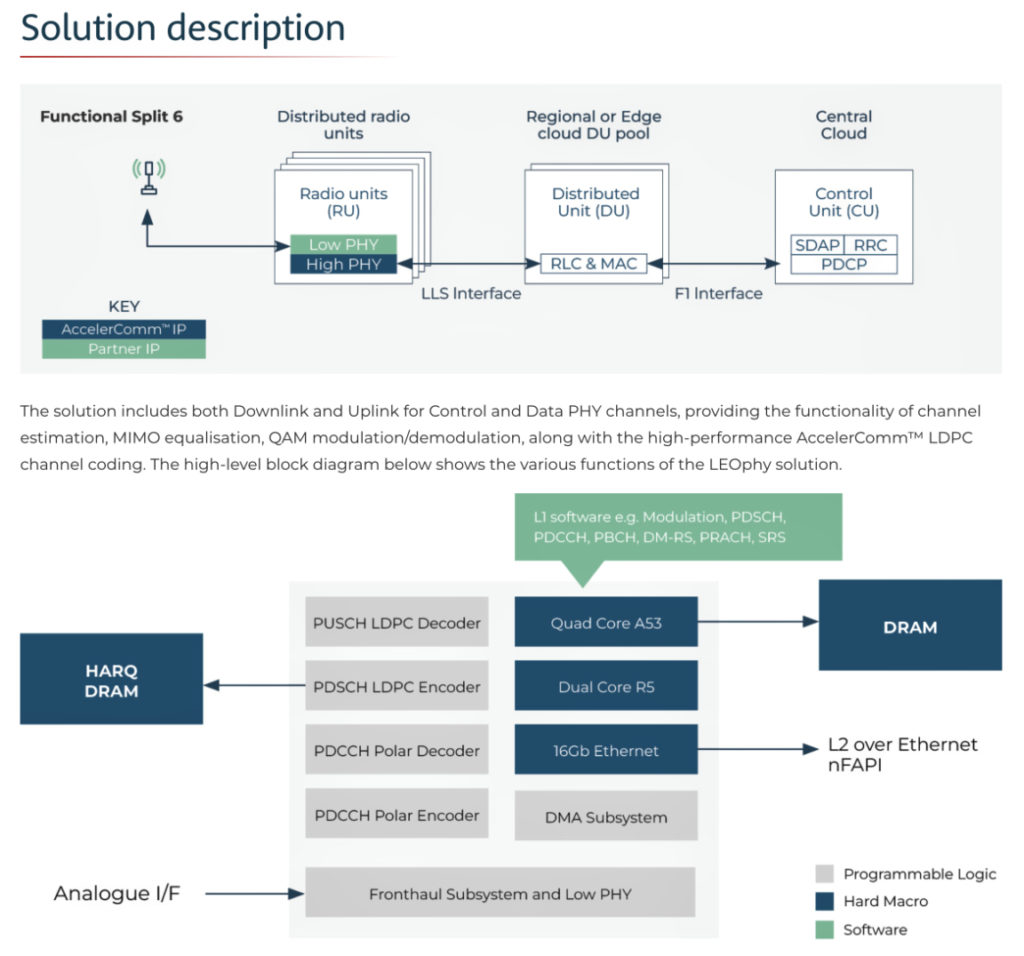
AccelerComm and TTP are jointly formulating a high-performance, 5G, LEO Regenerative base station for deployment on LEO satellites. The project combines expertise and IP from the two companies and additional technology from partners to propose a dedicated 5G regenerative gNodeB1 solution tailored to support high-performance 5G services in the challenging environment of a Non-Terrestrial Network (NTN).

In a typical LEO deployment, one satellite covers a wide geographical area, using a large number of beams to cover a multitude of subscribers. Terrestrial gNodeB products of similar scale are not designed to deal with this unique LEO deployment challenge. Also, any gNodeB platform for space applications will be highly constrained in size, weight, and power and must be able to work in the hostile space environment.
The joint AccelerComm TTP LEO Regenerative base station solution will be designed to meet the growing demand for satellite-based eMBB (enhanced Mobile Broadband) and IoT (Internet of Things) services. This makes it an ideal solution for businesses and organizations that need to connect people and devices in remote locations, or for governments looking to provide internet access to all citizens.
The solution will support a large number of beams and high subscriber density and will be delivered on a space-hardened platform optimized for low-power and size. It includes a range of advanced developments in beam-to-cell mapping, beam forming and NTN beam-management.
The O-RAN compliant gNodeB leverages AccelerComm’s LEOphy, a Layer 1 modem that delivers enhanced performance for low-earth orbit satellite communications. LEOphy boasts the lowest error rates, with dedicated features to overcome the specific challenges of NTN channels, such as high path losses, differential delays, doppler shift, long propagation delays, and rapid fluctuations in signal amplitude and phase caused by atmospheric effects. As a result, it ensures a high-reliability link without resorting to lower coding rates and low-order modulation schemes, thereby maximizing spectral efficiency.

“For satellite 5G to be truly successful, there are a number of performance and efficiency challenges which have to be overcome. Solving these requires building on the existing 3GPP technologies to create a tailored solution built to deal with the unique challenges,” said Rob Barnes, Chief Marketing Officer at AccelerComm. “There has been an explosion in interest around combining satellite and traditional mobile communications systems with the iPhone 14 launch and the T-Mobile Starlink announcement. “However, for satellite 5G to be truly successful, there are a number of performance and efficiency challenges which have to be overcome. Solving these requires building on the existing 3GPP technologies to create a tailored solution built to deal with the unique challenges of operating around a thousand kilometres from earth, at speeds of over 7km per second, all while dealing with power and resource constraints. We are delighted to be working with our partner TTP to develop this high-performance solution which will open up a whole new market for delivering 5G services from space.”
“TTP is pleased to partner with AccelerComm to define a highly scalable and low power gNodeB solution, that will enable LEO operators to efficiently deliver 5G NTN services,” said Adrian Hillier, TTP’s Head of Next G. “A 5G NTN LEO regenerative gNodeB deployment presents unique challenges when compared to Terrestrial gNodeB. In order to serve the number of beams and support the density of subscribers required, the gNodeB will have to be heavily optimized and tightly integrated with the overall payload functionality.”
1A 5G Base Station uses New Radio (NR) technology and is referred to as a gNodeB (gNb). gNodeB radios features Software Defined Radio (SDR) with various MIMO options including 2×2, 4×4, 8×8 and Massive MIMO options for higher capacities. Options for 5G deployment in Sub-6GHz bands as well as Millimeter Wave (mmWave) bands are available. — https://www.5gradio.com
